One of the hardest parts of being creative is actually getting started on a project. A lot of people who consider themselves to be creative have a lot of ideas floating around in their heads, but they find it hard to actually get going and put it down on paper. I have had this problem for most of my life, but recently I've thought about the projects I've done in the past that made me feel the most creative and tried to put together some of the things they've had in common, both things that I've done and things that have been forced on me.
Envision the Project
The second step in every project, after the general idea, is how you are going to communicate that idea. Will it be a novel, a comic book, a video game, a poem? If it's going to be a comic book, for instance, how long do you want it to be? How big do you want it to be? Color or black and white? On paper or online? Self-published or published by someone else? Try to picture what the finished project will look like in your hands. Think about the size of the pages that you've decided on; how much art fits on those pages? Think about the number of pages that you've decided on; how much story fits in that number of pages? Think about the incidental things-- the front cover, the inside front cover, the back cover, the inside back cover. Are you going to make it a wraparound cover? Are you going to put a list of the characters on the inside front cover? Are you going to put in sketches on some extra pages?
Obviously, not every one of these questions needs to be answered or nothing would ever get done, but it's good (and rare, in my experience) to have a sense for what the project is going to be like, at the very least.
Set Parameters
Sometimes these are set for you by your choice of medium, but oftentimes, when working on your own projects, there is a sense of infinite possibilities for any work. While that has its upside, it can be crippling when it comes down to the nuts and bolts of getting things actually done. In this day and age, with computer colors, print on demand, online publishing, non-standard formats, and the convergence of media, the idea of formatting to the requirements a certain medium seems awfully quaint. But you know what? You have to commit sometime, so let's hear it, champ. You may decide you're going to do a ten-page story. You may decide you're going to do a 24-hour Comic. You may decide you're only going to use a certain kind of pen. You may swear up and down that you're going to do one comic strip a day for a year.
Whatever it is, it's your track now, and for all the times that it will feel constricting, there will be just as many times when you are so glad that you have a clear path to funnel your energy, be it high or low, into.
The genesis of the 144-hour Graphic Novel Project was built around wanting to create a graphic novel in a year and fit it into the schedule of someone who works full-time. Therefore, a number of tight parameters had to be set. We chose to emulate the 24-hour comics' page-an-hour pace, which demanded such things as simple tools, a very very loose story outline, working at published size, and for me, relatively unvaried page layouts. These rules, rather than limiting the creativity of the project, shape it, and make it into what it is.
Set Aside a Time
Along the lines of setting parameters, it's important to set aside a failsafe, foolproof time that you will always be able to work on the project with no interruptions. This is important. This deserves a time in your day. If it's every day before you go to work, or every day when you come home before you eat dinner, or an hour before bed, or during lunch. If you set it up, let people know what you're doing, and follow it, then you end up getting the work done. If you choose poorly (e.g. at a time when you have other things going on) or fail to make it a priority (do everything else that comes up instead of work on your project), you will not. Obviously, things come up, but it's important to think about that as a reason to carve out extra time here and there to finish that month's work so you can go into the next chapter with your head held high.
Do NOT fall into the trap of "just working on it when I have the time". That makes it your last priority. Unless you have absolutely nothing going on in your life, I'm sorry to say it will not work.
Don't Do a Bad Job
This may seem obvious, but it's a very fine point. A lot of times when you have an idea in your head for some project you want to do, you expand it in your head until it is so great and wonderful that nothing you could do (at least the first time around) could ever match it. This keeps you from doing it because you love imagining it in perfect form so much. This is Brain Crack.
Now, that's not to say that you should just throw every undigested idea you ever have out there for the world to see, but what I find to be useful is this simple guideline: Don't Do A Bad Job. Decide what you are going to do, set your parameters, put aside some time, and then try your very best not to suck. If that's what you're focusing on, you'll be remembering to develop your characters, have your dialogue sound good, choose your panel design carefully, and draw your characters consistently and well. Worried that the work might just be okay, and not pure genius like you hoped? I wouldn't. Just like running at an even pace throughout the race puts you in position to sprint and win at the end, taking care of the basic, average stuff puts you in the position to have moments of genius come through when they will be most appreciated.
Come on. I know you've got it in you.
Tuesday, April 10, 2007
Subscribe to:
Post Comments (Atom)

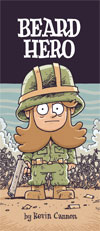
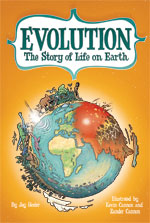
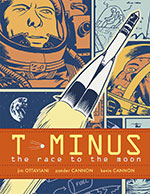
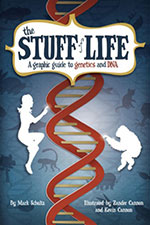
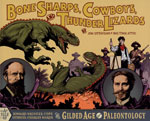
5 comments:
My former bad habit was having an idea (say, in the shower) and then telling myself that I'd flesh it out later (say, after work). Two crappy things would invariably happen: either I'd forget the idea entirely, or I'd be so removed from the original idea, that fleshing it out later felt like trying to flesh out someone elses' idea.
So my new trick is to flesh out ideas as soon as I get them. This trick works wonders, because the vary fact that you had a great idea in the first place means you're in the zone and your mind is running on all cylinders. So be late for work, make your parents wait a little bit longer at the airport, watch that episode when House comes out on DVD, but just flesh out your idea when it comes to you!
see...i worry about all this re:144 page project.
i KINDA have an idea fleshed out.
i have a theme at least.
a few chapters too.
but i really have no idea wheres its going or how its going to end.
and seperating the whole sch-bang by 30 or so days really makes me fret that it'll all be an incoherant mess by the end.
...but at least it'll be fun in (pssibly) failing.
do you guys have your 144 pagers all mapped out?
Danno-- I talked to kevin before I started my 144-hour story and he gave me this advice: Have a general ending in mind, but don't choose a story where a whole bunch of interconnected stuff has to happen to make it make sense. Oh, and have it be funny if you can.
I have general things I want to happen, mostly in the form of what eventually will happen to this character or what their purpose will be in the story. I have certain things happening in certain chapters, but I have far more chapters that are big blanks on page so far.
As for making your story not be an incoherent mess, just think about what sort of thing has to happen to the main character to make this story into an important event in his/her life, then structure everything around that.
Z
Thanks Zander.
Vonneguts death has also become(i think) an important turning point in what i want this story to be.
...but we'll see
A note from Scott McCloud's talk last night at Dreamhaven: Every story begins at the beginning of a character's desire for something, and ends with the resolution of that desire, either positive or negative.
I've always been thinking my way around this idea, but I'd never heard it put so succinctly. Pretty good guideline for a 144 page story.
Post a Comment